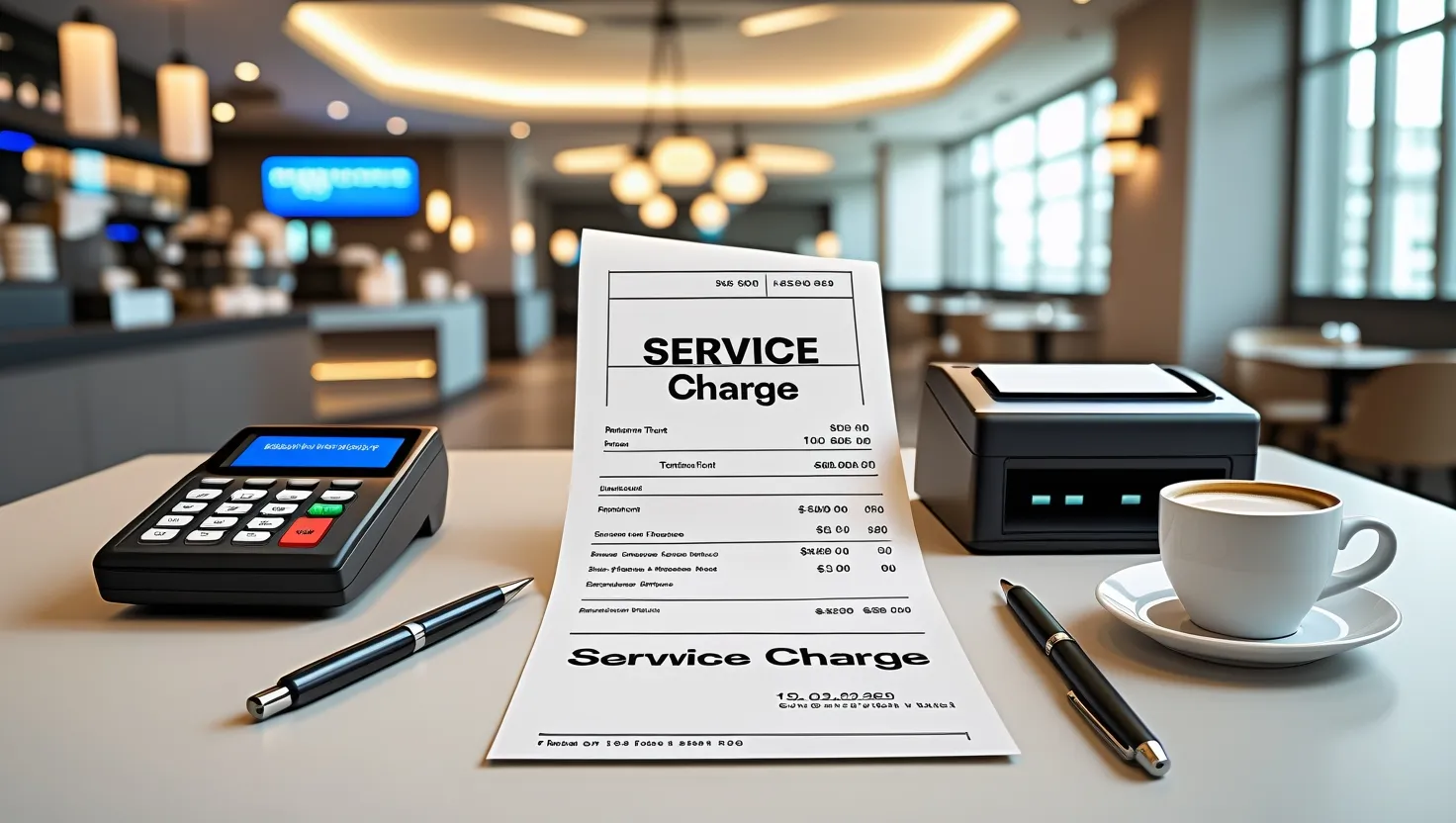
What Is a Service Charge? #
A service charge refers to an additional amount that businesses apply to a customer’s bill to compensate for supplementary services rendered.
This is commonly seen in sectors like hospitality, personal care, and freelance services.
For example, with a bill of ₹1,000 and a 10% increase, the total amount due rises to ₹1,100. This extra amount assists in covering staff wages, operational needs, or quality enhancements.
Why Service Charges Matter #
Understanding this practice is essential for small business owners in India. It ensures:
- Transparent pricing
- Compliance with consumer expectations and legal norms
- Enhanced trust and credibility
- Improved competitiveness in the market
Clear communication of additional costs reinforces customer satisfaction and loyalty.
Where You See Service Charges #
1. Restaurants
Eateries often apply an additional fee to the total bill.
Example: A ₹2,000 meal with a 10% markup adds ₹200, bringing the total to ₹2,200.
This amount may be used to support the wages of service staff and kitchen personnel. In many cases, it substitutes traditional tipping practices.
2. Hotels
Accommodation providers may include extra charges for services like room cleaning, dining, or concierge.
Example: A 15% charge on a ₹3,000 room service bill amounts to ₹450 extra, totaling ₹3,450.
It contributes to sustaining high service standards and rewarding hospitality teams.
3. Salons and Spas
Beauty and wellness centers may include an additional fee when using premium products or advanced techniques.
Example: On a ₹1,000 spa session, a 10% add-on amounts to ₹100.
This helps cover premium supplies and maintain skilled professionals.
4. Banks and Financial Services
Financial institutions impose charges for services unrelated to products—like account maintenance or transaction facilitation.
Example: A bank may deduct ₹500 annually for a premium account service.
Such fees sustain infrastructure, support teams, and secure operations.
5. Freelancers and Consultants
Independent professionals may include a fee to manage admin tasks or use digital tools required for project execution.
Example: On a ₹10,000 project, a 5% markup leads to a total of ₹10,500.
This covers backend efforts and resource utilization.
How to Calculate a Service Charge #
The calculation is straightforward:
- Select a percentage (5–20% is typical)
- Multiply it with the original bill amount
- Add it to the total
Example:
Bill: ₹2,000
Rate: 10%
Markup: ₹200
Final Total: ₹2,200
Use billing tools or software to simplify this process.
Is a Service Charge the Same as a Tip? #
| Tip | Service Charge (Added Fee) |
|---|---|
| Voluntary | Pre-included on the bill |
| Decided by the customer | Fixed by the business |
| Amount varies based on satisfaction | Consistent and predetermined |
| May not be shared equally | Usually distributed fairly among staff |
What the Law Says About Service Charges in India #
Though not mandated, businesses can apply these fees if customers are informed in advance.
Key legal considerations:
- Customers can decline payment if dissatisfied
- The fee must appear transparently on the bill
- Concealing or adding it without notice may invite complaints
Tips:
- Display policies on menus or websites
- Train staff to explain charges tactfully
- Address concerns promptly
How Service Charges Help Small Businesses #
- Keep Base Prices Low: Customers prefer seeing a lower base price with a clear breakdown.
- Offset Additional Costs: Helps cover tools, utilities, or high-grade materials.
- Supports payroll Stability: Reduces reliance on inconsistent tips.
- Equitable Pay Distribution: Ensures fair compensation across the team.
Setting the Right Service Charge #
Industry Benchmarks:
- Restaurants: 5–15%
- Salons: 5–10%
- Hotels: 10–20%
Evaluate Overheads: Consider wages, resources, and customer expectations.
Market Sensitivity: Avoid overcharging; it can affect client retention.
How to Add Service Charges the Right Way #
- Finalize an appropriate rate
- Add a visible line on invoices
- Train your team to communicate effectively
- Maintain consistency across all platforms
- Respect feedback and adjust if necessary
- Adapt your rates periodically
- Use technology for error-free billing
FAQs #
Is it compulsory to pay this fee in India?
No, it’s not mandatory. Customers can refuse in case of poor service.
Can I include this fee without informing customers?
No. It must be mentioned upfront—either on menus, invoices, or signage.
What price should I set?
Typically between 5% and 20%, based on your industry and services.
Is it possible for customers to decline payment after prior knowledge?
They can request removal in case of a negative experience.
Is imposing this fee permissible under Indian law?
Yes, as long as you transparently disclose it and enforce it fairly.
Conclusion #
Adding a small additional fee can improve revenue stability, employee satisfaction, and pricing transparency—if implemented thoughtfully. Always keep your policies clear, your customers informed, and your practices fair.
Use Vyapar App to handle billing, stock & payments all in one place.
Make bills, track stock, and handle payments in one place.
